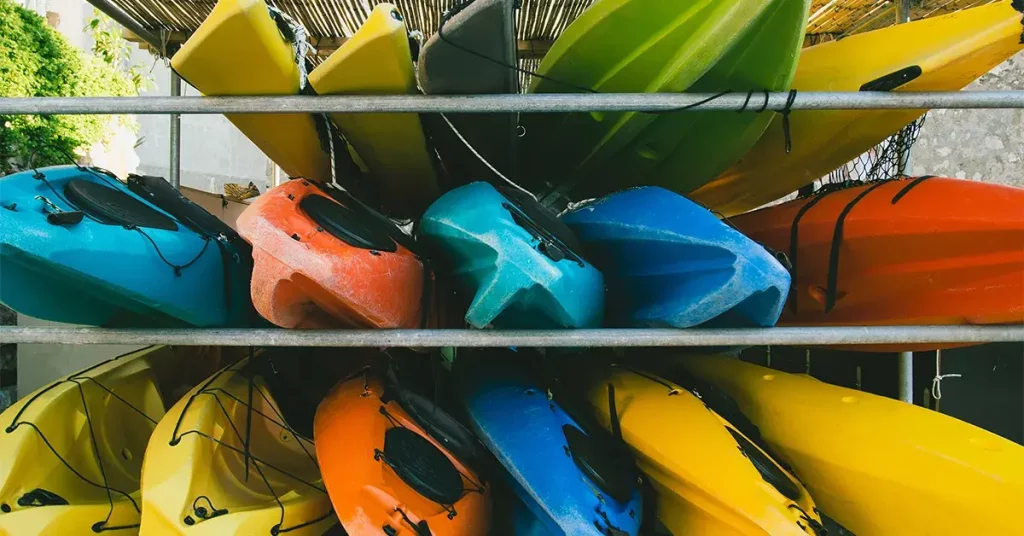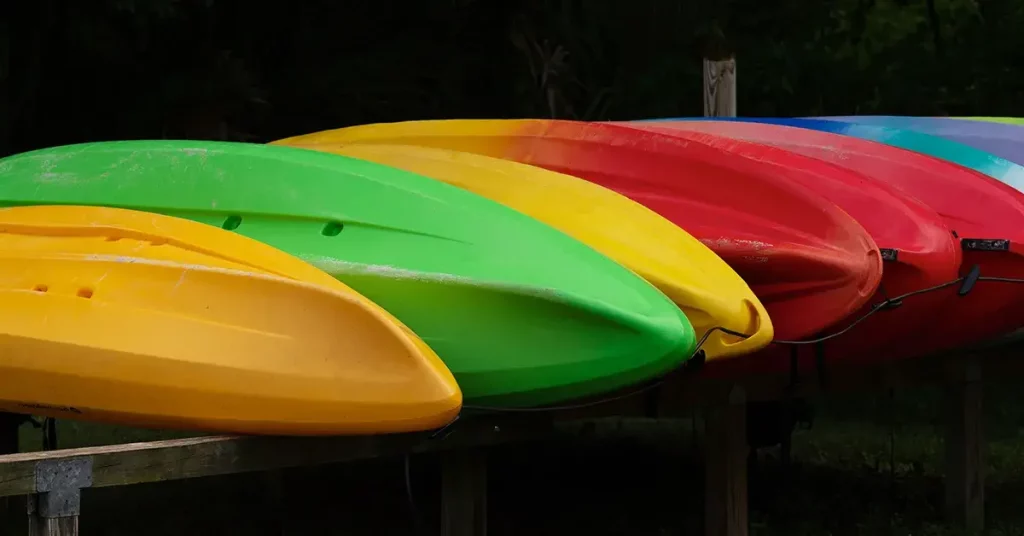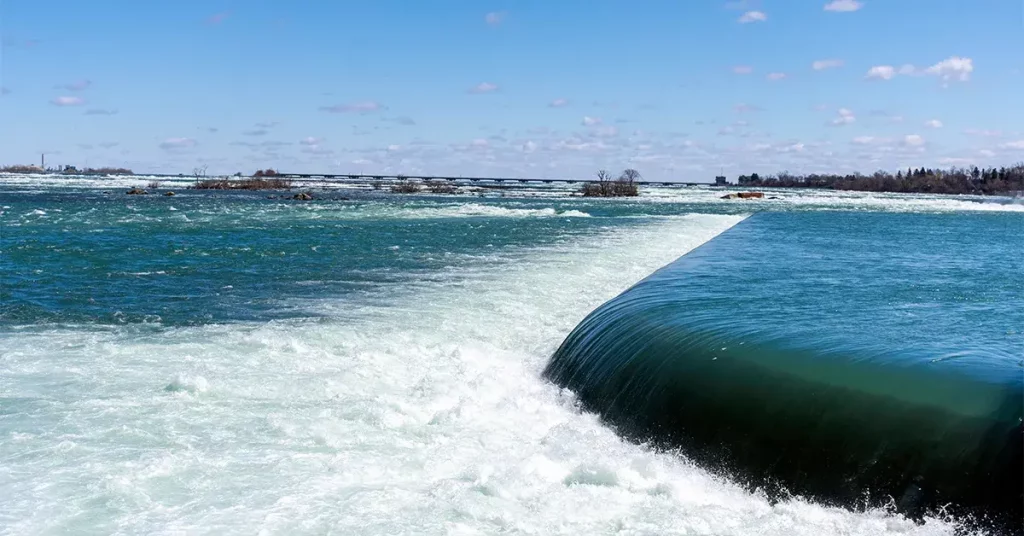Proper storage is one of the key things you can do to extend the lifespan of your kayak. Just like a car, bike, or motorcycle, improper storage can result in serious damage that might not be reversible.
The last thing you want to do with your prized watercraft is store it in direct sunlight – this can result in serious warping, bleaching, and structural weakening of the hull. Similarly, storing it outdoors without some form of cover can result in moisture pooling inside the cockpit – which leads to mold, mildew, and other long-term damage.
Luckily, preventing this situation from occurring is not that difficult. With a little preparation and know-how, you’ll be able to safely store your kayak for the offseason or over winter. Let’s take a closer look at some kayak storage methods in greater detail.
Dangers During Long-Term Storage
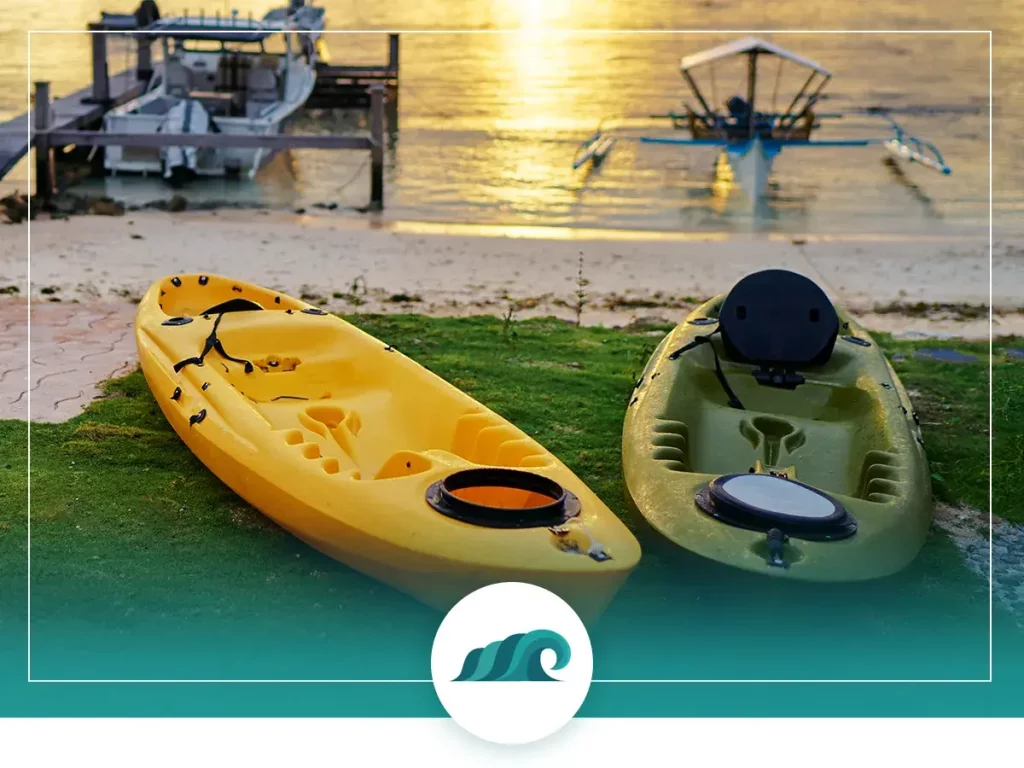
Whenever you’re storing your kayak for a prolonged period, you’ll need to know what to avoid. There several potential hazards that can cause damage to your kayak – depending on the kayak materials.
Heat: In addition to direct sunlight, extreme heat can also cause long-term damage to your craft. This is especially true for polyethylene kayaks, which can warp and deform if they’re left in extreme heat for too long.
Sunlight: As mentioned previously, sunlight can cause warping and bleaching of your kayak hull. UV rays can weather and prematurely age polyethylene hulls – so storage away from direct sunlight is a must. They can also damage other kayak materials, including fiberglass and composites.
Moisture: Moisture is sort of the silent killer when it comes to long-term kayak storage. Rainwater, melted snow, and even pooled dew can collect inside your cockpit and stagnate. This is the main reason why storing your kayak cockpit side down is a must for outdoor storage.
Cold: Extreme cold can also cause damage to your boat. Repeated freezing and thawing over time can weaken the hull material. This is especially true for kayaks that are also exposed to moisture.
How To Store A Kayak Indoors?
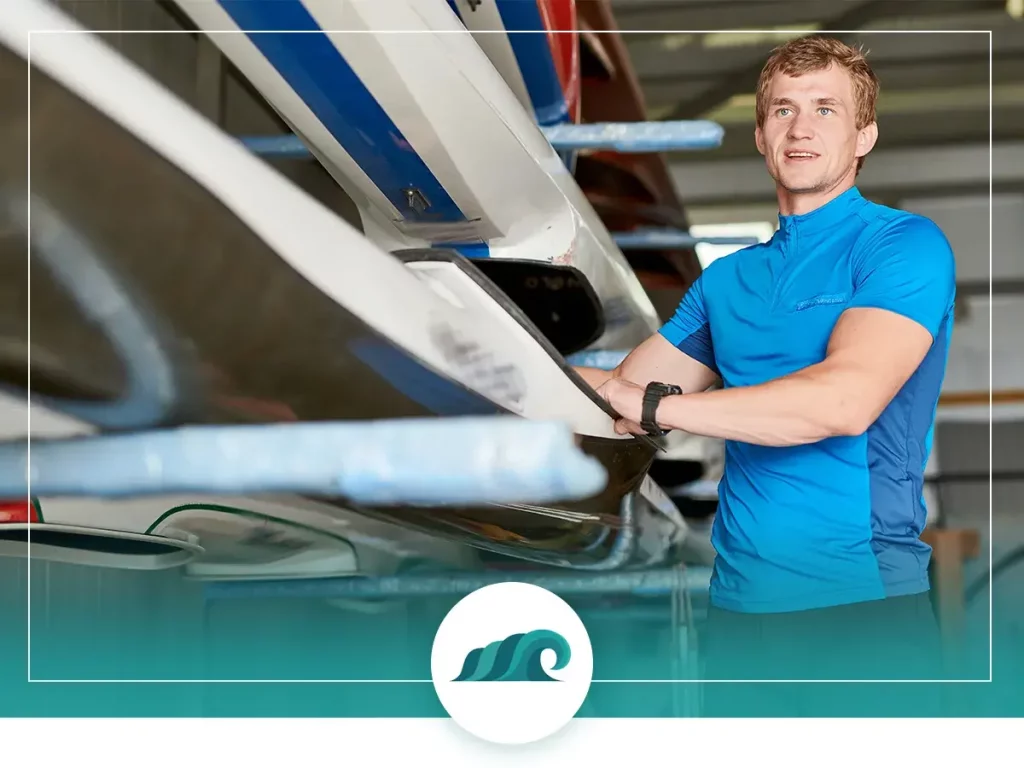
Indoor storage is always preferred over outdoor storage when it comes to kayaks. If you have room inside your garage, shed, basement, or other storage areas then this is the way to go.
Basements, garages, and sheds are great storage spaces for kayaks, as they’ll keep them protected from the elements and generally provide enough space to hang them off of the floor. If your garage or shed isn’t temperature controlled, then you’ll still want to avoid exposing your craft to extreme heat and cold.
Apartment Storage
What if you’re an apartment dweller and don’t have a garage or basement to stash your kayak over winter?
Not to worry. Depending on the size and layout of your apartment, you may still be able to find a good long-term storage solution.
If you have enough room, you can install a wall or ceiling mount in a spare bedroom or office and mount it there. If that’s not an option, then you can stash it on a balcony, although this will expose it to the elements. Many condos and apartment buildings have a dedicated storage area – which is another solid option.
If none of those options are available, then you can forgo a hard-shelled kayak and get yourself an inflatable craft. Inflatable kayaks are a great option for small apartment dwellers, as well-made models will perform similarly to hard-shelled ones, plus they fold up to the size of a small suitcase.
How To Store A Kayak Outdoors?
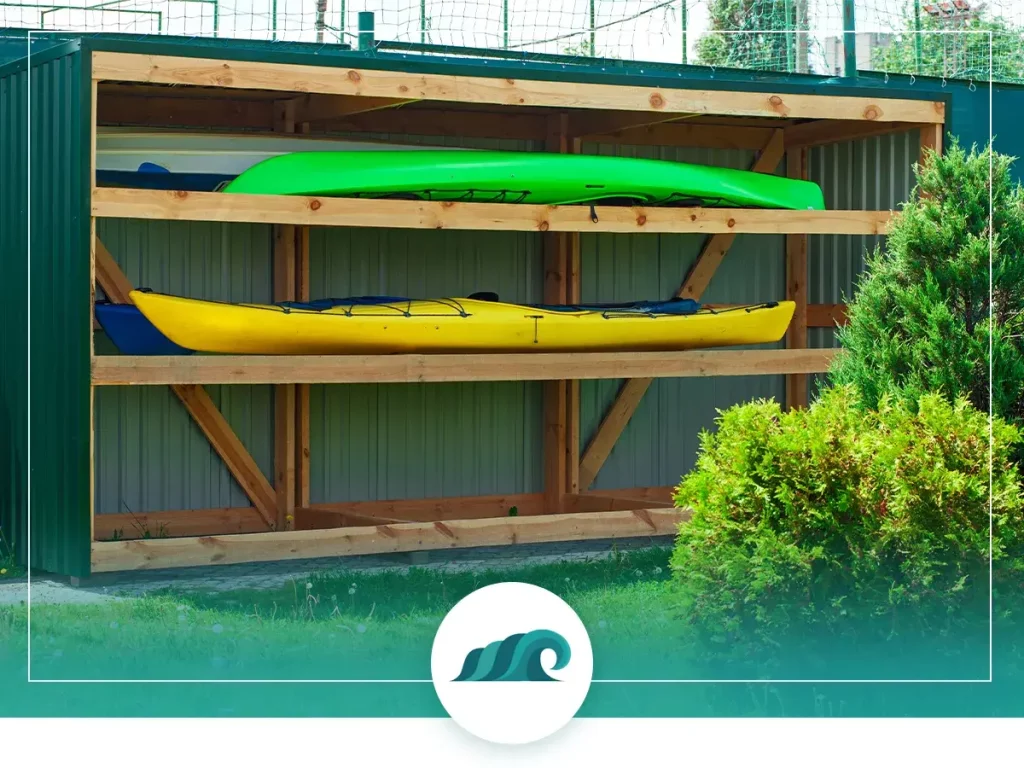
If indoor storage is not an option for you, then the next best option is some form of covered and protected outdoor storage.
When you’re storing outdoors you’ll need to take several precautions to keep your kayak protected from the elements. You’ll need some form of cover to keep sunlight, rain, and excess heat from warping the hull.
Generally, the best option Is hanging a tarp above the kayak. This will keep moisture and UV rays from getting to the craft, while also giving it enough airflow that it won’t collect excess moisture. Wrapping a tarp directly around the kayak isn’t a good idea – as this will trap in moisture and lead to mold and mildew developing.
If possible, hang the tarp on an angle above your craft. This will ensure rainwater slides right off the surface and will prevent water from pooling inside the tarp. If you’re storing the kayak in a wet environment, then adding an additional kayak cover over the cockpit is a good idea.
If you have multiple kayaks to store over winter, then getting a pre-made kayak storage rack can also be a solid solution.
Prepping Your Kayak For Storage
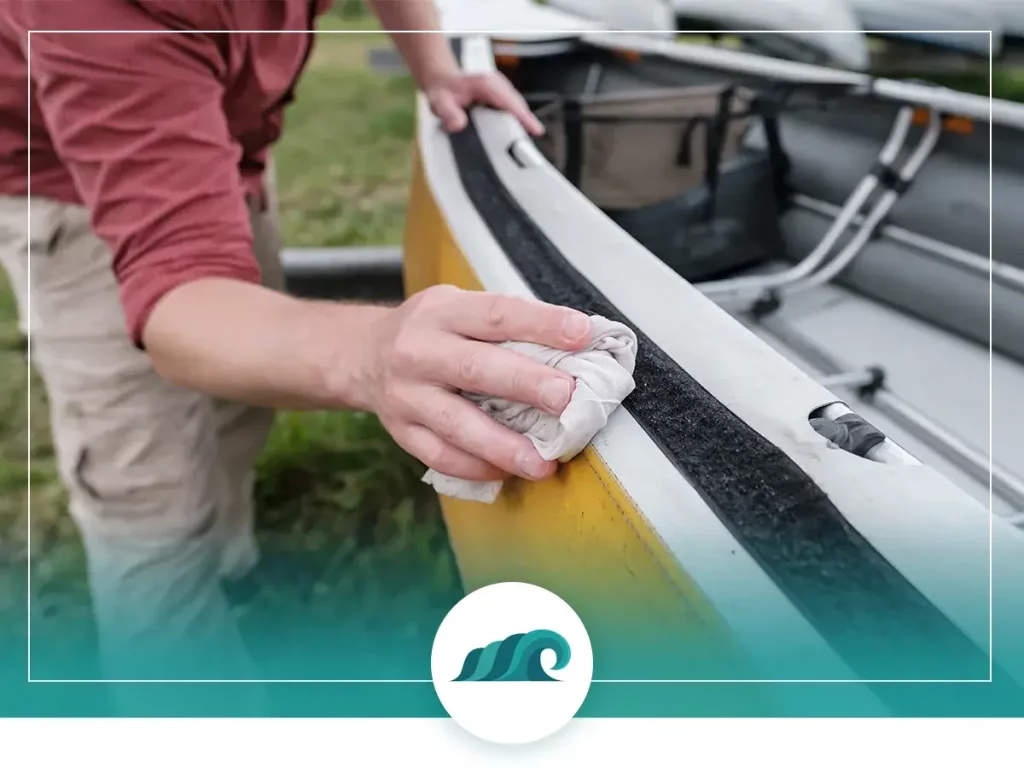
Before you store your kayak for the off-season, you’ll want to take a few steps to prepare it.
The first thing to do is to remove any seats, accessories, spray skirts, and other soft fabric parts. Set these aside for indoor storage. If they’re dirty, you’ll want to give them a freshwater rinse and air dry.
Next, you’ll want to give the entire hull a thorough rinse in freshwater and mild soap. Make sure to get into all the nooks and crannies, including scupper holes, foot braces, and hatches. Don’t use any harsh chemicals or bleaches that can react with the hull material and cause damage.
Let the kayak air dry until there’s no moisture inside it whatsoever. You can use a clean, dry towel to speed this process up if necessary. Now is a good time to apply a sun-protective spray to ensure long term protection from UV rays.
Storage Methods

Now that you’ve prepped your kayak for long-term storage, you’ll want to make sure you store it in a position that won’t damage the hull over time. Improper storage can lead to warping and hull deformations over time, so you’ll want to make sure the hull is well-supported.
Generally, you’ll want to avoid leaving it directly on the floor of a garage or basement. If you don’t have some form of rack or hoist, then leaning it vertically against a wall with the stern side down works well.
If you are using some type of rack, then make sure to support the hull with at least two points of contact, three is possible. If you’re securing it to the rack with straps, make sure not to overtighten. You don’t need to crank the straps all the way tight like you would on a roof rack.
If you’re using a hoist, hang it cockpit side down, so the hull faces upwards. You’ll want to use wide straps to evenly distribute the kayak’s weight, placing them about a third of the way from each end.
Safety
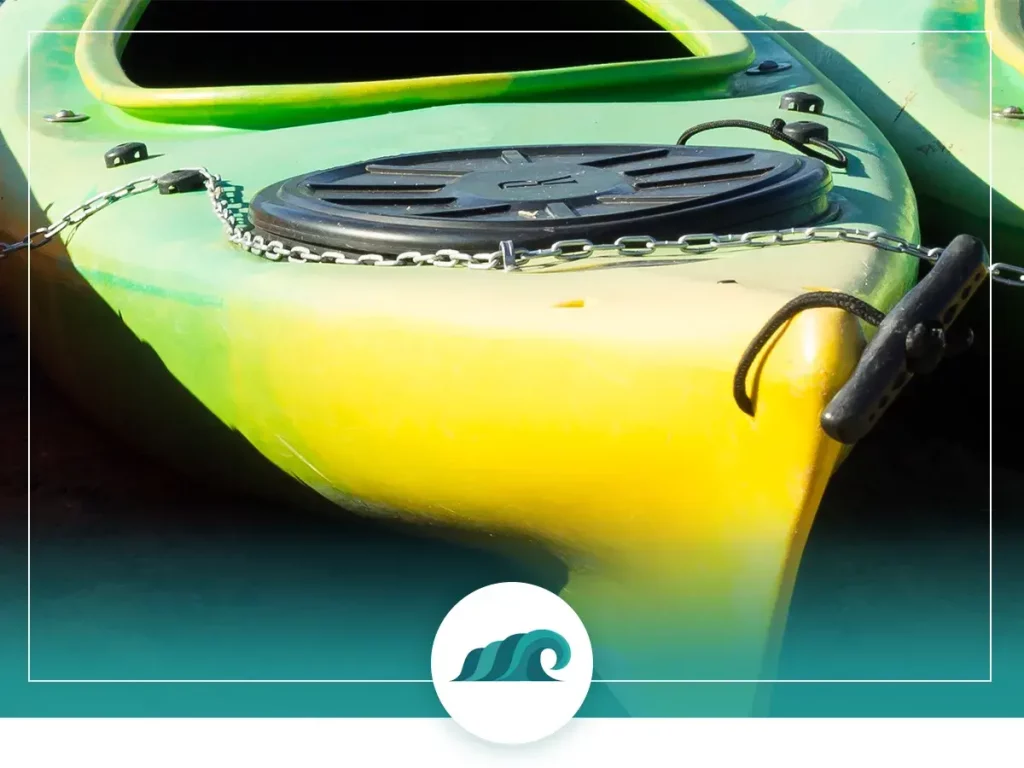
A word about theft:
No one wants to think about it, but there are thieves out there that would like nothing more than snatching up your prized craft. Taking a few simple precautions can be the difference between keeping your kayak and falling victim to theft.
Most property theft comes from targets of opportunity. If a thief can’t see your kayak or sees that’s it’s locked up in some fashion, they’ll generally move on to easier prey. Just like a house with a guard dog inside it, thieves are often deterred by a few safeguards.
Here are a few things you can do to reduce the odds of theft:
- Out of sight, out of mind. If a potential thief can’t see your kayak, they can’t steal it. Outdoor racks placed where they can’t easily be seen from outside your property are a must. Using bland covering tarps that blend in with their surroundings is another smart move.
- Some form of kayak lock is another key deterrent. If a thief is motivated enough, they’ll usually be able to break one of these locks, but this is not normally the case. If they can’t ‘smash-and-grab’ they’ll usually move on. Check out the Seattle Sports Cradle Cable Lock for a solidly built locking cable.
- Adding some form of unique marker to the kayak is another good idea. In the unfortunate case where your kayak is stolen, this may help you recover it later on. Also, be sure to write down your kayak’s serial number, which is usually scribed into the hull near the stern.

